8 Best Macro Cameras & Close-Up Lenses
Welcome to our latest guide on the best macro cameras and lenses. This short introduction explains what macro photography is and why you might want to get into it. Or maybe you only want a camera with close focus capability to zoom in and isolate parts of an object. A dedicated macro photographer tends to invest in pricy equipment. Close-up enthusiasts don’t need to spend so much.
| Budget |
|---|
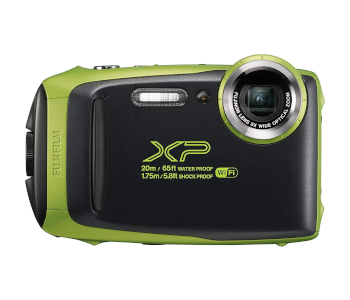 |
| Fujifilm FinePix XP130 |
| 4.3/5.0 |
| Sensor: 16MP BSI-CMOS |
| LCD: 3” |
| 5 colors available, underwater capable, burst mode. |
| Check Amazon |
| Best Value |
|---|
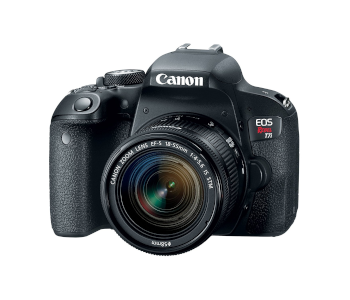 |
| Canon EOS REBEL T7i |
| 4.8/5.0 |
| Sensor: 24MP CMOS APS-C |
| LCD: 3” |
| Long battery life, sturdy build, small & light, built-in WiFi, vari-angle LCD. |
| Check Amazon |
| Top Pick |
|---|
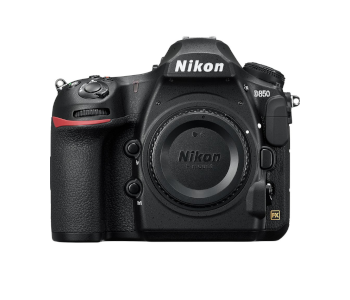 |
| Nikon D850 FX-Format DSLR |
| 4.9/5.0 |
| Sensor: 46MP BSI-CMOS FF |
| LCD: 3.2” |
| Articulating touchscreen, weather sealing, illuminated buttons, long battery life. |
| Check Amazon |
What Is Macro Photography—Exactly?
Macro photography is a photographic genre of extreme closeups. The subjects are typically miniscule and blown up to expose incredible details. It could be tiny insects, flowers, or anything else that’s hard or impossible to see with the naked eye. So, the best macro equipment can get up close and personal. It fills the frame with things you would not usually see to make the invisible world visible.
How to Start Macro Photography
There are two ways to approach close-up photographic art. One is to have a decent camera and a dedicated macro lens, or at least one with macro capability. The other is to use an accessory called extension tubes. The latter needs a camera with interchangeable lenses as the tubes go between the camera body and the attached lens.
Extension tubes are an affordable way for newbies to dabble in close-ups. The more extension tubes you add, the closer you can focus and increase image size. The typical cost of a single extension tube is around 25 dollars and a set of 3 for 50 dollars. These tubes are model-specific, so make sure they fit your DSLR if you want to experiment with them.
The Focal Range of Macro Lenses
Most macro lenses have focal lengths of between 50mm and 200mm. The costliest options are those between 150–200mm. Some zoom lenses include a macro setting, but most can’t get above half life-size magnification. These types of lenses are perfect for closeup work and for folks who want to dabble with macro photography. Those who get the bug are sure to invest in a macro-dedicated lens later.
The nearer you are to the object, the more critical it is to focus manually. Autofocus (AF) is not reliable with extreme closeups. Also, the noise of an AF motor can scare away insects that jump or fly and lose you that unique shot. It’s a common newbie mistake and major frustration.
Keep it Illuminated
A lot of macro photography needs lighting up, but not with a harsh built-in pop-up flash. Soft, even lighting is the way to go. You can achieve this with DSLRs by using a ring flash. It’s a circular flash tube that attaches to the front of a lens. Some offer various levels of brightness along with other light settings and effects. Prices start at around 30 dollars. Compact cameras can use a simple reflector.
A lot of macro photography needs lighting up, but not with the harsh built-in pop-up flash. Soft, even lighting is the way to go. You can achieve this with DSLRs by using a ring flash. It’s a circular flash tube that attaches to the front of a lens. Some offer various levels of brightness along with other light settings and effects. Prices start at around 30 dollars. Compact cameras can use a simple reflector.
Keep it Steady
A steady hand is not usually enough to shoot macro, especially extreme closeups. This genre of photography often needs patience and micro-adjustments during the composition stage. At least invest in a monopod, but a sturdy, fully-adjustable tripod is the best choice. The GEEKOTO 58” is an excellent example that is sure to serve all your other photographic needs.
About My Best Macro Cameras’ Guide
There are 8 superb cameras reviewed below across all budgets and capabilities. Some are ideal, multi-purpose products with close focus and macro settings. There are also a few high-end DSLRs that can take macro photography to its extreme. These are all popular cameras that sell well and enjoy lots of favorable feedback from those who own them.
Macro Cameras Comparison Table
| Make and Model | Sensor | LCD | Price |
|---|---|---|---|
| Fujifilm FinePix Macro XP130 Digital Camera | 16MP BSI-CMOS | 3” | Check Price |
| Canon EOS REBEL T7i Great Macro Camera | 24MP CMOS APS-C | 3” | Check Price |
| Nikon D850 FX-Format DSLR Camera | 46MP BSI-CMOS FF | 3.2” | Check Price |
| PANASONIC 4K LUMIX DC-ZS70S Camera | 20.3MP 1/2.3” MOS | 3” | Check Price |
| PANASONIC Lumix FZ80 4K Digital Camera | 18MP 1/2.3” BSI-CMOS | 3” | Check Price |
| Nikon W300 Waterproof Underwater | 16MP 1/2.3” BSI-CMOS | 3” | Check Price |
| Sony DSC-RX10 III Cybershot Camera | 20.1MP 1” EX RS BSI-CMOS | 3” | Check Price |
| Sony a7R III Full-Frame Mirrorless Camera | 42MP BSI-CMOS FF | 3” | Check Price |
1. Fujifilm FinePix XP130 Digital Camera | Best Budget
Editor’s Rating: 4.3/5
The Editor’s Best budget pick goes to the Fujifilm FinePix Macro XP130 Digital Camera. It’s the latest model in the XP series and comes equipped with a 16GB SD Card.
- Best feature 1: Waterproof, shockproof, dustproof, and freezeproof
- Best feature 2: 28mm wide-angle, 5x optical zoom lens
- Plus points: 5 colors available, underwater capable, accurate color reproduction, burst mode
- Minus points: No eye-level viewfinder, short battery life
Fujifilm FinePix XP130 Camera Highlights
Fujifilm’s FinePix XP130 comes in 5 colors. It has a 16MP BSI-CMOS sensor and optical image stabilization (IS). This thing is versatile and rugged. You can use it underwater down to 65ft. It’s also dustproof and can withstand shocks up to 58ft. It’s an excellent camera for underwater closeups thanks to its macro modes. The XP130 sports a 28mm wide lens with 5x optical zoom.
Standout features include a large 3” LCD screen, Bluetooth connectivity, and remote app control. The latter lets you control the camera remotely using a regular smartphone or tablet. You also get 11 advanced photo filters and a Geotagging function. The camera can shoot 1080p HD video @ 60fps (frames per second) using the dedicated record button. It also has a High-Speed Movie function.
The Not So Good
This model doesn’t have an eye-level viewfinder. That’s not unusual with cameras that have large LCD screens. Even so, it’s a feature that some photophores demand, and is, therefore, a potential con. Another negative is the short battery life that only gives a maximum of 240 shots from a single charge. Spare Fujifilm NP-45S batteries cost around 40 dollars or less.
| Tech Specs |
|---|
| Brand Name: Fujifilm |
| Camera Type: Point and shoot |
| Sensor: CMOS6.4 MP BSI |
| Viewfinder: None |
| Waterproof: to 65ft (20m) |
| Video Resolution: 1080p |
| Stills: 16.4 MP |
| Focus Options: AF |
| Card Storage: 16GB SD card |
| Battery: FUJIFILM NP-45S Lipo |
| Battery Life: 240 shots |
| Screen Type: 3” LCD |
| Camera Weight: 15.2 oz. |
| Dimensions: 8 x 5 x 5” |
| The Pros |
|---|
| Large LCD screen |
| Underwater capable |
| Shockproof to 58ft (1.75m) |
| Rugged construction |
| 5x optical zoom lens |
| 5 colors available |
| Burst mode |
| Bluetooth capability |
| Geotagging |
| High-speed movie |
| Remote control via app |
| 11 special effects filters |
| Excellent value |
| The Cons |
|---|
| No viewfinder |
| Poor battery life |
| No touchscreen |
2. Canon EOS REBEL T7i Camera | Best Value
Editor’s Rating: 4.8/5
Canon’s EOS REBEL T7i gets the Best Value slot. It’s an outstanding macro camera with a 24MP CMOS APS-C sensor. There are plenty of native and third-party macro lens options.
- Best feature 1: Exceptional macro and multi-purpose DSLR
- Best feature 2: Huge range of lenses to choose from
- Plus points: Long battery life, sturdy build, small & light, built-in WiFi, vari-angle LCD
- Minus points: No dual SD card slots, no in-body stabilization, no weather sealing
Recommended Marco Lens: EF-S 60mm f/2.8 Macro USM, EF 100mm f/2.8L Macro IS USM
Canon EOS REBEL T7i Highlights
This camera boasts a long battery life of around 600 shots from a single charge. The T7i is small and light for a DSLR, which makes it travel-friendly. It feels nice in the hands and has a comfortable grip. Canon offers around 320 native lenses for its EF/EF-S mount. There are at least 5 dedicated Canon macro lenses worth consideration. Third-party alternatives include Sigma, Zeiss, and Tamron.
The T7i’s built-in WiFi lets you connect to other compatible devices. Wireless connections include Bluetooth and NFC (near-field communication). On the back of the camera is a large, 3” vari-angle touchscreen display. Novice users are sure to welcome the Feature Assistant program that walks you through all the features and functions. The camera shoots FHD 1080p video at 60fps.
The Not So Good
No camera is perfect, but Canon’s Rebel T7i comes close for a Digital-SLR in its category. It doesn’t have dual DS card slots, though, which would have been useful. There’s no image stabilization for photos either. Still, there are over 100 stock lenses that offer optical stabilization (OS). Lastly, the T7i body doesn’t have any weather sealing, so one must be careful in wet and dusty conditions.
| Tech Specs |
|---|
| Brand Name: Canon |
| Camera Type: Digital-SLR |
| Sensor: CMOS 24MP APS-C |
| Viewfinder: Optical (pentamirror) |
| Video Resolution: 1080p @ 60fps |
| Stills: 24MP |
| Focus Options: Contrast/phase detection |
| Card Storage: Supports UHS-I |
| Battery: LP-E17 Lithium-ion |
| Battery Life: 600 shots |
| Screen Type: 3” Articulating touchscreen |
| Camera Weight: 18.72 oz. |
| Dimensions: 5.2 x 3.9 x 3” |
| The Pros |
|---|
| Exceptional macro & multi-purpose DSLR |
| Local SD storage |
| Huge range of lens options |
| Built-in optical viewfinder |
| Long battery life |
| Sturdy build quality |
| Small & light for a DSLR |
| Built-in WiFi |
| Vari-angle LCD |
| Touchscreen display |
| External Microphone Port |
| Flash Sync Port |
| Digital video stabilization |
| Remote control via mobile devices |
| The Cons |
|---|
| No dual SD card slots |
| No image stabilization |
| No Weather sealing |
3. Nikon D850 FX-Format DSLR Camera | Top Pick
Editor’s Rating: 4.9/5
Nikon makes the Top Pick with its D850 FX-Format DSLR Camera. It has a full-frame image sensor and supports UHS-II cards. This is a worthy beast for those serious about macro photography.
- Best feature 1: Professional level DSLR for macro photography
- Best feature 2: Exceptional magnesium alloy build quality
- Plus points: Articulating touchscreen, weather sealing, illuminated buttons, long battery life
- Minus points: No image stabilization, heavy camera body
Recommended Marco Lens: Nikon 105mm f/2.8G, Tamron SP 90mm f/2.8, Sigma 150mm f/2.8 EX
Nikon D850 DSLR Camera Highlights
The build quality of the Nikon D850 is nothing short of exceptional. It feels like a professional camera the moment you pick it up. That’s thanks to its ergonomic design and magnesium alloy body elements. You can shoot amazing, glossy magazine-quality ultra-closeups with this high-end DSLR. Its articulating touchscreen and environmental sealing open lots of outdoor shooting possibilities.
Other D850 highlights include illuminated buttons, a top LCD panel, and dual card storage slots. There’s also built-in WiFi, remote control, and fast 1/8000s shutter speed. The battery life is incredible at 1840 shots on a single charge. Videographers are sure to welcome the external mic port, headphone ports, and 4K video. These are just some of the 40 pro-level features of the Nikon D850.
The Not So Good
This feature-packed camera doesn’t have any sensor-based image stabilization (IS). That’s a shame considering how much this puppy weighs. Most macro photographers use a tripod or other support and remote control or timer. Still, in-body IS would be welcome for a camera weighing 35.80 ounces. Nikon does offer 65 native lenses with Optical Image Stabilization, though.
| Tech Specs |
|---|
| Brand Name: Nikon |
| Camera Type: Digital-SLR |
| Sensor: BSI-CMOS 46MP full-frame |
| Viewfinder: Optical (pentaprism) |
| Video Resolution: 4k |
| Stills: 46-megapixels |
| Focus Options: Contrast/phase detection |
| Card Storage: Dual slots support UHS-II |
| Max Shutter Speed: 1/8000 sec |
| Battery: Nikon ENEL15a Li-ion |
| Battery Life: 1840 shots |
| Screen Type: 3.2” articulating touchscreen |
| Camera Weight: 35.80 oz. |
| Dimensions: 5.75 x 4.88 x 3.11” |
| The Pros |
|---|
| Pro-level DSLR for macro work |
| Magnesium alloy build |
| Built-in viewfinder |
| Large articulating touchscreen |
| Top LCD panel |
| Dual card storage |
| Weather sealing |
| Illuminated on-body buttons |
| Incredible battery life |
| Built-in WiFi |
| Remote control |
| Ultra-fast shutter speed |
| External mic port |
| External headphone port |
| High-res video |
| The Cons |
|---|
| No sensor-based stabilization |
| Heavy camera body |
4. PANASONIC 4K LUMIX DC-ZS70S Macro Camera
Editor’s Rating: 4.4/5
Meet the popular pocket-sized PANASONIC 4K LUMIX DC-ZS70S digital camera. It has a 20.3MP 1/2.3-inch MOS sensor. The built-in 24–720mm lens has 30x optical zoom and a close, 3cm macro range.
- Best feature 1: Close 3cm macro range
- Best feature 2: Built-in 30x 34–720mm optical zoom lens
- Plus points: Manual focus, manual exposure, RAW, stabilization, WiFi, tilting touchscreen, 4K
- Minus points: No external hot shoe, no environmental sealing, slow lens
PANASONIC LUMIX DC-ZS70S Highlights
Panasonic’s Lumix DC-ZS70S has a lightweight, travel-friendly design. Dedicated macro photographers understand the value of manual controls. Well, the DMC-ZS70 here offers full manual exposure and focusing. There’s an option to shoot RAW and take control over the outcome of the final image. The camera also has optical image stabilization, which is useful for shooting at slower shutter speeds.
Other DC-ZS70S features include a 180° flip-up touchscreen, and an eye-level viewfinder. Battery life is a good average for its class at 380 shots per single charge. The LUMIX DC-ZS70S has built-in WiFi and remote control via a smartphone or tablet. Videographers can produce crisp, 4k video with cinematic-quality details. It’s a feature-packed camera, but it’s not perfect (see next).
The Not So Good
This camera does not have an external hot-shoe. That’s sure to be a deal-breaker for some macro photographers who rely on the ring or twin-flash lighting. The camera isn’t weather-sealed, either, so extra care is necessary when shooting outdoors in misty or dusty conditions. The small maximum apertures make the lens quite slow, which is another potential letdown for some.
| Tech Specs |
|---|
| Brand Name: Panasonic |
| Camera Type: Digital compact |
| Sensor: 20.3MP MOS sensor |
| Viewfinder: Built-in electronic |
| Video Resolution: 4K |
| Stills: 20 megapixels |
| Focus Options: Manual/AF |
| Card Storage: 1 x SD, SDHC, SDXC |
| Battery: DMW-BLG10PP lithium-ion |
| Battery Life: 380 shots |
| Screen Type: 3” tilting LCD |
| Camera Weight: 11.36 oz. |
| Dimensions: 4.41 x 2.64 x 1.61” |
| The Pros |
|---|
| Lightweight and portable camera |
| High-resolution sensor |
| Close 3cm macro range |
| Built-in 30x 34–720mm zoom lens |
| Built-in Viewfinder |
| Tilting touchscreen |
| Manual focus |
| Manual exposure |
| RAW shooting |
| Long battery life |
| Optical image stabilization (OIS) |
| Time-lapse Recording |
| Built-in WiFi |
| Remote smartphone control |
| The Cons |
|---|
| No external hot shoe |
| Not weather sealed |
| Slow lens |
5. PANASONIC Lumix FZ80 Macro 4K Digital Camera
Editor’s Rating: 4.5/5
Another Panasonic makes the page, and this time it’s the Lumix FZ80 4K Digital Camera. It has an 18MP, 1/2.3 BSI-CMOS Sensor, and a 20-1200mm, 60x optical zoom lens with 1cm close focus.
- Best feature 1: Macro function with 1cm close range
- Best feature 2: Built-in image stabilization
- Plus points: Manual focus, manual exposure, external hot shoe, 60x optical zoom, 4K video
- Minus points: Heft, average low-light performance, no sealing, no tiltable screen
PANASONIC Lumix FZ80 Camera Highlights
Panasonic’s Lumix FZ80 checks a few of the right boxes for novice macro photographers. The lens can focus to within 10mm of a subject. You also get to control the focus manually, which is essential for closeup work. Manual exposure control is another welcome feature. The FZ80 boasts a 3” LCD, optical image stabilization (OIS), and an external hot-shoe. The latter is vital for macro lighting.
This camera offers convenient USB charging. It takes around 90 minutes for a dead battery to recharge fully. The camera’s built-in WiFi lets you easily connect it to smartphones and other mobile devices. Further FZ80 standout features are its comfortable, ergonomic grip, post focus, and low-light capability. Another is the 4K video and 4K photo capture.
The Not So Good
The camera is quite big and heavy for its class. That forces you to use a tripod or monopod for fast-action shooting. Most macro photographers use a support of some kind anyway. Its low-light capability is okay rather than exceptional, so no plus points there. Other negatives that may put some off are no weather sealing and no articulating (tilting) LCD screen.
| Tech Specs |
|---|
| Brand Name: Panasonic |
| Camera Type: Point and shoot |
| Sensor: 18MP 1/2.3 BSI-CMOS |
| Viewfinder: Built-in electronic |
| Video Resolution: 4K |
| Stills: 18 megapixels |
| Focus Options: Manual, AF |
| Card Storage: UHS_I support |
| Battery: DMW-BMB9PP Lithium-Ion |
| Battery Life: 330 shots |
| Screen Type: 3” touchscreen (fixed) |
| Camera Weight: 21.73 oz. |
| Dimensions: 5.12 x 3.7 x 4.69” |
| The Pros |
|---|
| Macro function w/ 1cm range |
| Touchscreen display |
| Built-in Viewfinder |
| Built-in image stabilization |
| Manual focus control |
| Manual exposure control |
| External hot shoe |
| 60x optical zoom |
| RAW shooting |
| Decent battery life |
| Remote smartphone control |
| Ultra-HD video |
| The Cons |
|---|
| Heavy for a camera in its class |
| Average low-light performance |
| No weather sealing |
| No articulating LCD screen |
6. Nikon Coolpix W300 Waterproof Macro Camera
Editor’s Rating: 4.4/5
Consider the Nikon COOLPIX W300 if you want a versatile underwater camera with macro capability. It has a CMOS 16MP 1/2.3” BSI sensor, and a 24–120mm lens with 5x optical zoom.
- Best feature 1: Macro mode with 0.4” (1cm) close focus range
- Best feature 2: Large local storage capacity
- Plus points: Waterproof mode, freeze, shock, dust protection, 3-inch LCD, image stabilization
- Minus points: Short battery life, no manual controls, no tilt or touchscreen
Nikon W300 Waterproof Camera Highlights
Nikon built its Coolpix W300 for adventure seekers. It can produce high-resolution stills and UHD 4K video. The camera’s Waterproof Mode works underwater to depths up to 100ft (30m) for as long as 60 minutes. A dedicated macro mode lets you focus on subjects as close as 0.4” (1cm) from the lens. It also boasts protection from freezing temperatures, shocks, and dust.
The W300 has a large, bright 3.0” LCD monitor for easy navigation. You don’t get a memory card, but it can accept SanDisk up to 512GB. Nikon’s W300 also has Optical Image Stabilization to keep shots steady at slower shutter speeds. Other standout features are the lightweight body, built-in WiFi, environmental sealing, and remote control. It also has a reasonably fast f/2.8 lens.
The Not So Good
The battery has enough charge to keep an average shooter happy for a day. Heavy users, though, will find the 280 shots per single charge frustrating. Spare EN-EL12 batteries are not expensive, so it’s wise to carry one or two spares in the gadget bag. Other negatives are no manual focus or exposure control. Also, the W300 doesn’t have an articulating or touch screen.
| Tech Specs |
|---|
| Brand Name: Nikon |
| Camera Type: Compact |
| Sensor: CMOS 16MP, 1/2.3 |
| Viewfinder: None |
| Video Resolution: 4K |
| Stills: 16 megapixels |
| Focus Options: Autofocus (AF) |
| Card Storage: SD, SDHC, SDXC |
| Battery: ENEL12 Li-ion |
| Battery Life: 280 shots |
| Screen Type: 3” fixed LCD |
| Camera Weight: 8.15 oz. |
| Dimensions: .41 x 2.6 x 1.14” |
| The Pros |
|---|
| Easy to use adventure camera |
| Lightweight, compact design |
| Dedicated close-focus Macro Mode |
| High local storage capacity |
| Waterproof mode |
| Freeze protection |
| Shockproof |
| Dust-resistant |
| Large bright LCD screen |
| Image stabilization |
| Built-in WiFi |
| Environmental sealing |
| Remote control |
| The Cons |
|---|
| Short battery life |
| No manual focus |
| No manual exposure control |
| No tilt or touchscreen |
7. Sony RX10 IV Cybershot Macro Camera
Editor’s Rating: 4.6/5
The penultimate review is for Sony RX10 IV Cybershot Camera with a 3cm macro focus range. It has a 20.1MP 1” Exmor RS BSI-CMOS Sensor, and a fixed 24-600mm 25x zoom lens.
- Best feature 1: Superb camera for tele-macro photography
- Best feature 2: Manual focus and manual exposure control
- Plus points: Deep grip, tilting touchscreen, flash shoe, weather sealing, WiFi, long battery life
- Minus points: Heavy, overly complicated menus, slow startup time
Sony RX10 IV Cybershot Highlights
This camera has exceptional build quality, an ergonomic design, and a deep, comfortable grip. Sony’s Cyber-shot DSC-RX10 IV is not a true macro camera, though. It can focus as near as 3cm from the lens to the subject. That’s ideal for insects, flowers, jewelry, and closeups of wedding rings on fingers, etc. Tele-macro is also quite impressive with its 600mm close focus range of 2.36ft.
The DSC-RX10 IV has manual focus and exposure control, tilting touchscreen, and a hot shoe. These are all useful features for closeup photography. Others include optical image stabilization, a built-in viewfinder, RAW shooting, and weather sealing. The built-in WiFi is handy when you need to connect to smartphones and tablets. Battery life is also on the high side of average at 400 shots per charge.
A Videographer’s Delight
Cannon hasn’t forgotten videographers, either. It’s RX10 IV here exploits 4K movie recording and uses a rapid Hybrid AF system. The result is ultra-fast, accurate focus speeds and AF-tracking. All video and stills save to local storage, which takes Class 10 (or higher) SDHC/SDXC memory cards.
The Not So Good
At 2.41 lbs., the Sony DSC-RX10 III Cybershot is heavy. It needs to be with so much packed into its body, but its heft is sure to deter some. The menus can be a challenge to navigate for novice users or those not familiar with Canon cameras. Lastly, the startup time can take a while. That could result in missed opportunities if the camera is off when you suddenly see something worth shooting.
| Tech Specs |
|---|
| Brand Name: Sony |
| Camera Type: Compact |
| Sensor: BSI-CMOS 1 20MP |
| Viewfinder: Built-in electronic |
| Video Resolution: 4K |
| Stills: 20 megapixels |
| Focus Options: Manual, autofocus |
| Card Storage: SD, SDHC, SDXC |
| Battery: NP-FW50 Lithium-ion |
| Battery Life: 400 shots |
| Screen Type: 3” tilting touchscreen |
| Camera Weight: 38.62 oz. |
| Dimensions: 5.24 x 3.7 x 5.71” |
| The Pros |
|---|
| Well-built w/ ergonomic design |
| Deep, comfortable grip |
| Superb camera for close-ups |
| Manual focus control |
| Manual exposure control |
| Tilting touchscreen |
| Top LCD panel |
| Flash hot shoe |
| Image Stabilization |
| Built-in viewfinder |
| External mic and headphone ports |
| RAW shooting |
| Weather sealing |
| WiFi connectivity |
| Long battery life |
| The Cons |
|---|
| Heavy camera |
| Overly complicated menus |
| Slow startup time |
8. Sony a7R III Full-Frame Mirrorless Camera
Editor’s Rating: 4.7/5
Last of the current lineup of macro and close-up cameras is for the Sony a7R III mirrorless camera. It’s a rugged, high-quality full-frame model that takes spectacular 42MP stills and shoots 4K video.
- Best feature 1: Pro-level camera with huge macro potential
- Best feature 2: Dual memory card slots
- Plus points: Tilting touchscreen, stabilization, viewfinder, hot shoe, long battery life, mic port
- Minus points: Average weather sealing, heft, price
Recommended Marco Lens: Native options include the Sony SEL90M28G FE 90mm standard-prime Lens. It’s Sony’s f/2.8-22 dedicated Macro G OSS. Another is the Sony 50mm SEL50M28 FE F2.8 F macro lens. An excellent third-party alternative would be the Rokinon 100mm Macro f/2.8 lens.
Sony a7R III Mirrorless Camera Highlights
This beautiful pro-level camera has a 42MP, full-frame BSI-CMOS sensor. The image quality produced by it is unreal. Close-up portraits and serious macro shoots need a lens worthy of the a7R III body (see above). This camera comes with a 3” tilting touchscreen, though the touch functionality is a tad restricted. The dual card slots on the camera’s side, support all UHS-II memory cards.
Sony’s a7R III is packed with useful features and functions. It has a built-in viewfinder, 1/8000s fast shutter speed, a flash shoe, and remote control. The long 650 shot battery life is also worth mention. And videographers get external mic and headphone ports. There’s too much to cover in this mini-review, but it’s all good. There’s nothing gimmicky about any of the a7R III’s features.
Sony’s a7R III has 5-axis stabilization, so all its 115+ native lenses become stabilized on its body. Some excellent third-party lenses are also worth checking out.
The Not So Good
The camera does have a weather-sealed body, but I wouldn’t rely on it too much. It doesn’t have the same quality resistance you’d find on Nikon and Canon rivals. This model is heavy for a mirrorless camera, which reflects its quality. But heft is also an uncomfortable hindrance for folks on all-day shoots. The final con is the cost. It’s not overpriced for its class, but it’s out of reach for a lot of fans.
| Tech Specs |
|---|
| Brand Name: Sony |
| Camera Type: Mirrorless |
| Sensor: BSI-CMOS 42MP full-frame |
| Viewfinder: Built-in electronic |
| Video Resolution: 4K |
| Stills: 42 megapixels |
| Focus Options: Manual, autofocus |
| Card Storage: Dual w/ UHS-II support |
| Battery: Sony NPFZ100 Z-series |
| Battery Life: 650 shots |
| Screen Type: 3” tilting LCD touchscreen |
| Camera Weight: 23.17 oz. |
| Dimensions: 5 x 3.78 x 2.91” |
| The Pros |
|---|
| Pro-level mirrorless camera |
| Huge macro potential |
| Built-in WiFi |
| Dual memory card slots |
| Environmental Sealing |
| Tilting touchscreen |
| 5-axis stabilization |
| Built-in viewfinder |
| Hot shoe mount |
| Long battery life |
| Microphone port |
| Headphone port |
| Remote control |
| The Cons |
|---|
| Inadequate weather sealing |
| Camera heft |
| High price tag |
Contents
- What Is Macro Photography—Exactly?
- How to Start Macro Photography
- The Focal Range of Macro Lenses
- Keep it Illuminated
- Keep it Steady
- About My Best Macro Cameras’ Guide
- Macro Cameras Comparison Table
- 1. Fujifilm FinePix XP130 Digital Camera | Best Budget
- Fujifilm FinePix XP130 Camera Highlights
- The Not So Good
- 2. Canon EOS REBEL T7i Camera | Best Value
- Canon EOS REBEL T7i Highlights
- The Not So Good
- 3. Nikon D850 FX-Format DSLR Camera | Top Pick
- Nikon D850 DSLR Camera Highlights
- The Not So Good
- 4. PANASONIC 4K LUMIX DC-ZS70S Macro Camera
- PANASONIC LUMIX DC-ZS70S Highlights
- The Not So Good
- 5. PANASONIC Lumix FZ80 Macro 4K Digital Camera
- PANASONIC Lumix FZ80 Camera Highlights
- The Not So Good
- 6. Nikon Coolpix W300 Waterproof Macro Camera
- Nikon W300 Waterproof Camera Highlights
- The Not So Good
- 7. Sony RX10 IV Cybershot Macro Camera
- Sony RX10 IV Cybershot Highlights
- A Videographer’s Delight
- The Not So Good
- 8. Sony a7R III Full-Frame Mirrorless Camera
- Sony a7R III Mirrorless Camera Highlights
- The Not So Good


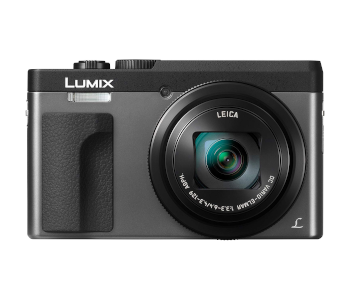
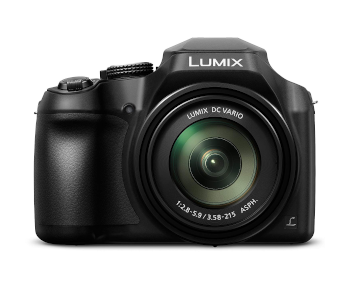
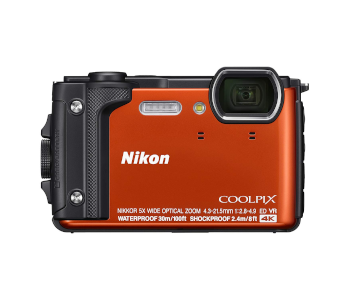
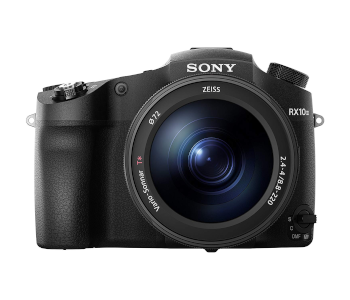
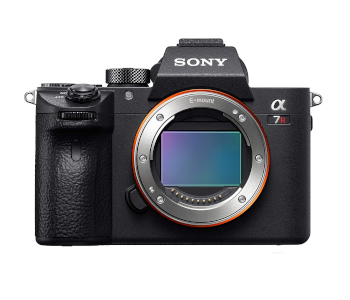
I am a beginner that has an interest in macro and zoom photography (wildlife insects flowers) .I do not plan on taking pictures of people or landscapes. I do not even want a video option. Seems like the panisonic Lumix FZ 80 is my best bet for the price .